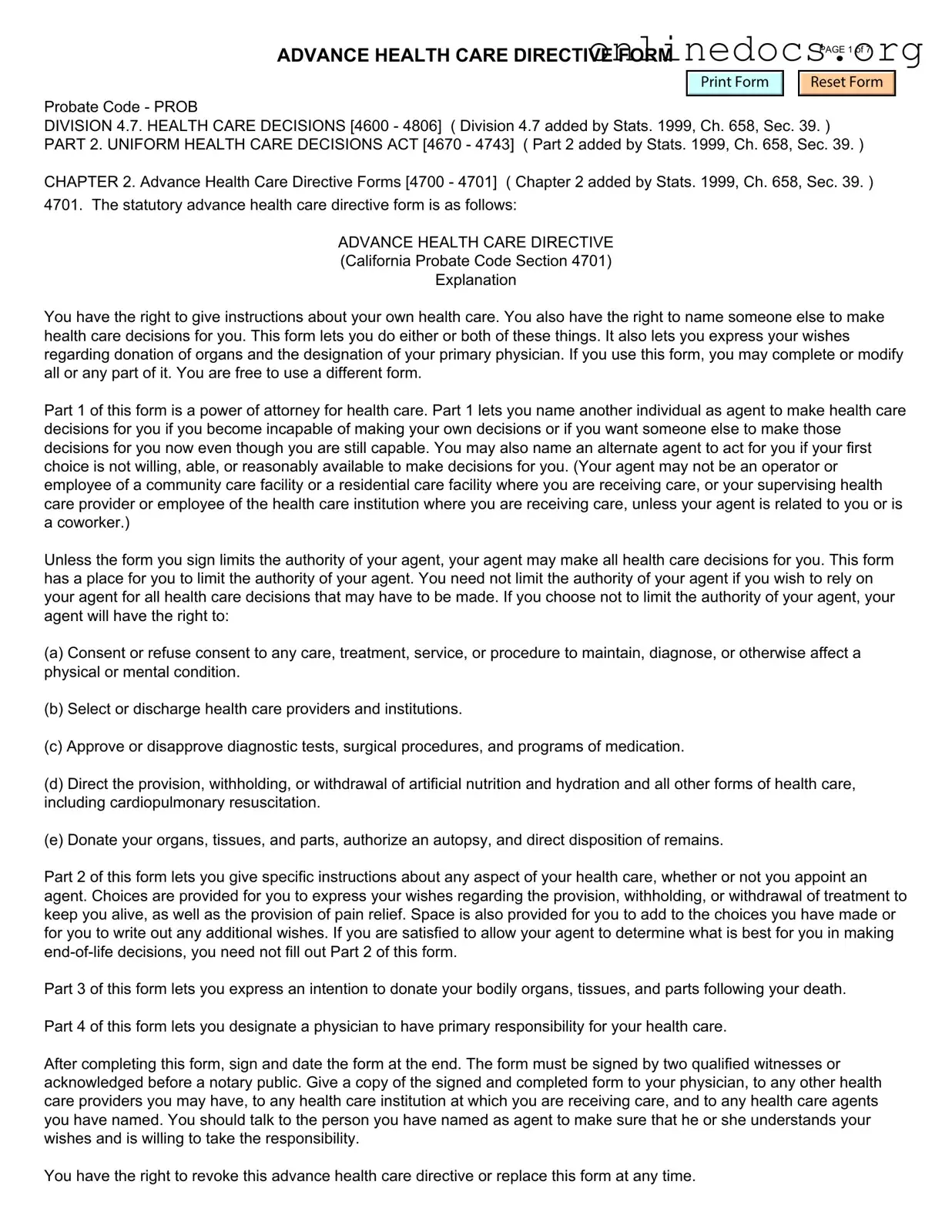The California Advanced Health Care Directive (AHCD) is similar to a Living Will, which allows individuals to specify their preferences for medical treatment in the event they become unable to communicate. Both documents focus on end-of-life care decisions and ensure that a person’s wishes regarding life-sustaining treatments are honored. A Living Will typically outlines specific medical procedures one may or may not want, such as resuscitation or artificial nutrition, thus providing guidance to healthcare providers and loved ones during difficult times.
Another document that shares similarities with the AHCD is a Durable Power of Attorney for Health Care. This document appoints a trusted individual, often referred to as an agent, to make medical decisions on behalf of the person if they are incapacitated. While the AHCD can include both health care preferences and the designation of an agent, the Durable Power of Attorney focuses primarily on the appointment of someone to act in the individual's best interests, ensuring that their healthcare wishes are respected even when they cannot voice them.
The Do Not Resuscitate (DNR) order is another document related to the AHCD. A DNR specifically instructs medical personnel not to perform CPR if a person’s heart stops or they stop breathing. This document can be part of an AHCD but is often used independently in hospitals and care facilities. It provides clear guidance to healthcare providers about the patient’s wishes concerning resuscitation efforts, making it a crucial tool for individuals who do not wish to undergo aggressive life-saving measures.
Health Care Proxy forms are also akin to the California AHCD. This document designates a person to make medical decisions on behalf of another individual when they are unable to do so. Like the Durable Power of Attorney for Health Care, a Health Care Proxy focuses on appointing an agent, but it may not include specific treatment preferences. Instead, it empowers the proxy to make decisions based on the individual’s values and previously expressed wishes, ensuring that their healthcare choices align with their beliefs.
A Trailer Bill of Sale form in California serves as a legal document that records the sale and transfer of ownership of a trailer from one party to another. It works to provide both the buyer and the seller with necessary details for the transaction, ensuring a clear understanding and proof of purchase. This form is critical for registration and legal purposes in the state, and you can find more information at legalformspdf.com.
A similar document is the Physician Orders for Life-Sustaining Treatment (POLST). This form is designed for individuals with serious illnesses and translates their healthcare preferences into actionable medical orders. While the AHCD allows for broader expressions of wishes regarding healthcare, the POLST provides specific medical orders that healthcare professionals must follow. This ensures that patients receive the type of care they desire in emergency situations, particularly when they cannot communicate their preferences.
The Five Wishes document is another comparable option. It combines elements of a Living Will and a Durable Power of Attorney for Health Care while also addressing personal, emotional, and spiritual wishes. Five Wishes allows individuals to express not only their medical preferences but also how they want to be treated and what they want their loved ones to know. This holistic approach helps ensure that all aspects of a person’s care are considered, making it a valuable complement to the California AHCD.
Lastly, the Health Care Directive form used in other states can be compared to the California AHCD. While each state has its own specific requirements and language, these documents generally serve the same purpose: to communicate a person's healthcare preferences and appoint a decision-maker. The fundamental goal remains consistent across state lines—ensuring that individuals receive care aligned with their wishes, even when they cannot advocate for themselves.
